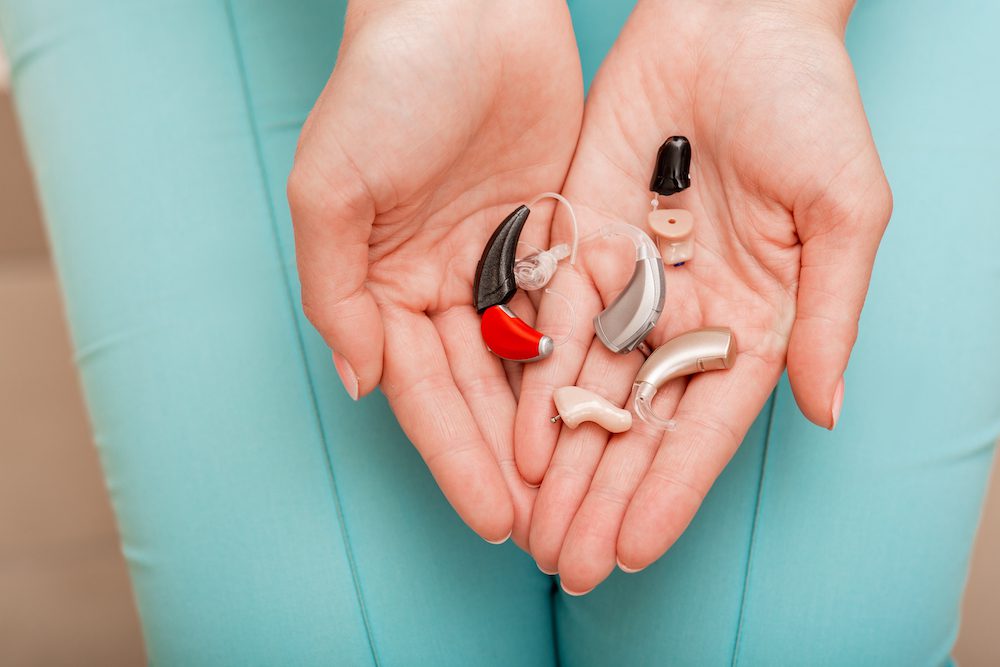Biometric Hearing Aids: What Are They and How Do They Work?
Your hearing loss is as unique as you are, and so should be the solution.

By: admin | June 23, 2023
Hearing aids has advanced significantly over time. As a result, we have experienced everything, including ear trumpets and modern computerized hearing aids. This will examine the development of hearing aids throughout history. This knowledge can be used by hearing healthcare professionals to assist individuals in understanding their choices and making the choice that is best for their requirements.
Early in the 17th century, ear trumpets were the first hearing aid used, widely used for several years. Various materials were used to make ear trumpets, including silver, wood, animal horns and even snail shells. They had a funnel-like form that improved sound amplification. The trumpet’s larger end would be held next to the ear, and the smaller end would be held close to the desired sound.
Moreover, carbon microphones allow users to alter their hearing aid settings to achieve the best sound quality for their particular requirements. For a better listening experience, users could modify the frequency response and amplification level, for example. The technology also created hearing aids with many channels, enabling users to rapidly and conveniently switch between frequencies based on their surroundings.
As we can see, carbon microphones have played a significant role in the development of hearing aids over the past years, from the earliest ear trumpets to the most modern devices. These have enabled us to develop progressively compact yet potent devices that provide individuals with excellent hearing relief.
With their introduction in 1926, these ingenious devices brought forth potent audio amplifiers that revolutionized the industry. Thanks to these vacuum tubes, hearing aids became smaller in size while delivering superior sound quality compared to their predecessors. The portable nature of vacuum tube hearing aids opened up new possibilities, allowing individuals to experience a wider range of tones. Moreover, engineers could finely manipulate the vacuum within the device’s amplifying chamber, granting them the power to attenuate or enhance specific frequencies of sound waves. This breakthrough enabled users to customize their hearing aids’ settings to meet their unique needs and adapt to different environments.
These modern devices blend high-tech advancements with sleek designs, offering both comfort and discretion. With personalized sound amplification, adaptability to different environments and easy connection to digital devices, these aids bring forth a new era of hearing. They use smart algorithms and automatic adjustments to separate speech from background noise, making voices clear and understandable. Some models even harness the power of artificial intelligence, learning from your preferences to create a customized sound experience. Modern hearing aids bridge the gap between silence and sound, giving you the confidence to navigate the world of sound with ease and joy.
Some of the most common hearing aid styles include behind the ear (BTE), in the ear (ITE) and in the canal (ITC).
A smart hearing system is the most recent development in hearing health technology. These devices use advanced signal-processing algorithms to detect, analyze and amplify sounds in order to improve clarity and decrease interference from background noise. Volume, balance, equalization and compressions giving people more control over their listening experience and improving clarity through devices that allow users to adjust parameters. This level of customization allows users to alter their experiences to meet their requirements and tastes.
Improvements in hearing health technology have greatly enhanced the quality of life for people with hearing loss. These tools, which range from telehealth to intelligent hearing systems and assistive listening devices, are vital resources for people needing them most. We can only anticipate these technologies boosting access and quality of care for those with hearing loss as this field advances. Talk with your hearing health professional if you have any questions about hearing aids.
To learn more about Life Hearing & Tinnitus Health Centers and the latest developments in hearing health, please call us at (239) 963-2429.

Your hearing loss is as unique as you are, and so should be the solution.
By: admin | April 30, 2024

Hearing health is intricately linked to our overall well-being, yet the
By: admin | February 28, 2024

Hearing tests are necessary to assess your auditory function, but only two
By: admin | December 28, 2023
